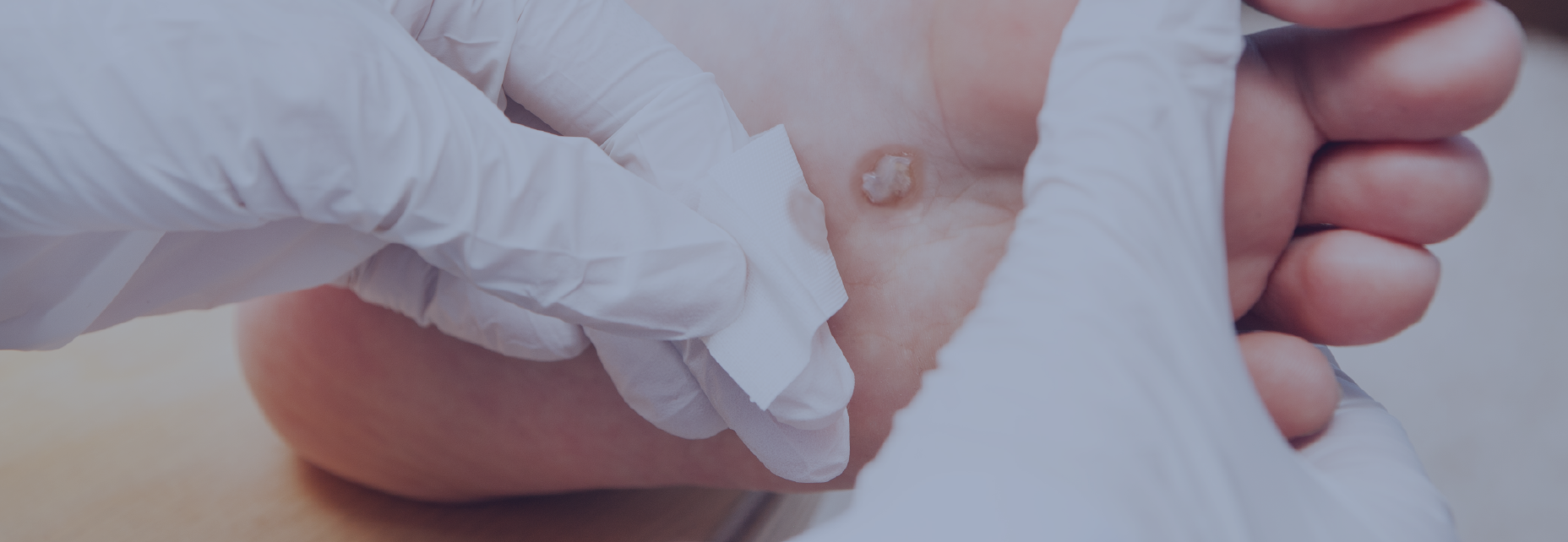
Verrucae
 Verrucae
Verrucae
Skin lesions are forms of lumps, moles or discolouration that can be found either on or slightly under the skin. You may find over time that new skin lesions appear, and this shouldn’t be ignored. At Pioneer, we provide expert assessment and treatment of skin lesions, ensuring early detection and the best possible care for your skin health.
One of the most common form of skin lesions is the Verrucae. Verrucae are essentially warts that commonly occur on the soles of the feet or around the toe area. They are caused by the Human Papilloma Virus (HPV), which is contagious through direct person-to-person contact. There are various forms of HPV, which all relate to various parts of the human body. The HPV virus is thought to thrive in moist, damp environments such as swimming pools, changing room floors and communal shower areas. It is possible to contract verrucae simply by walking across the same floor area as someone with a verruca, especially if you have any small or invisible cuts or abrasions that make it easier for the virus to penetrate.
Verrucae are most commonly seen in children, teenagers and young adults – largely those who use communal changing rooms. It is possible to develop an immunity against the virus over time but most people remain susceptible, although some more than others. Whilst Verrucae are harmless, they can be uncomfortable and painful if they develop on a weight bearing part of the foot. In addition, hard skin (callus) can form over the top of the verruca, increasing the discomfort in this area. There are also some strains of the virus that spread very quickly and can look unsightly.
In the first instance, avoid touching or scratching a verruca as it may spread into a cluster of warts. Instead, cover it up with a plaster. Evidence suggests that, in many cases, verrucae will disappear of their own accord, within six months for children but taking longer for adults (up to two years). This is because the body’s immune system recognises the presence of the virus and fights the infection naturally but it can take many months for this to happen. If it is painless, no treatment may be required as some treatments can be painful, especially for children, and can cause side-effects.
Our friendly podiatry team are here to help with Varrucae.
Here at Pioneer our friendly podiatry team are here to help. One of our podiatrists will assess your general well-being and foot health before deciding on a treatment plan. This may include:
- Acid-based treatments, which are stronger than regular ‘over the counter’ (OTC) treatments from your local pharmacy
- Cryotherapy, which involves freezing the verruca with liquid nitrogen or nitrous oxide gas
- Excisional surgery, which requires a local anaesthetic to be given
- Needling, where the entire area of the verruca is pricked with a needle to stimulate the body’s immune system, this treatment requires local anaesthesia.
Depending on the volume of verruca tissue, the appointment will take less than 60 minutes in most cases. Moreover, complete resolution time on average is 12-16 weeks and we commonly review the verrucae site over this period. The podiatrist may then require you to have up to 3 repeat treatments.
Whether you or a loved one is dealing with podiatry concerns, we’re here to help.

FAQs
Gait Analysis is a frame-by-frame analysis of your walking or running style, to help identify any lower limb problem or discrepancy
One of the most common conditions podiatrists treat is bunions (a bony bulge on the outside of the big toe that causes pain, swelling, and limited movement of the toe). It is recommended to visit your local podiatrist if your foot care routine is not alleviating any foot and ankle symptoms. As we get older, an annual foot health check is as important as a sight or hearing test. Conditions like diabetes or circulatory problems can all be picked up by looking at the feet, and common problems like corns, cracked skin, and ingrown toenails can be successfully treated. Even digital deformities such as bunions can be prevented at an early stage or managed effectively at Pioneer Private Care, so the best advice is to have an initial consultation with a member of the team.
There are many potential causes of foot problems which include:
- Standing on your feet for prolonged periods
- Aging
- Injury or trauma
- Overuse
- Extra body weight (greater loading due to an increase in body mass)
- Wearing shoes that don't fit properly
- Other conditions such as Diabetes or Arthritis

“Vince did an excellent job on my feet with neat triming of nails. His explanations and information were exemplary and I have learnt things about my feet that I had not known before. An excellent practitioner.”